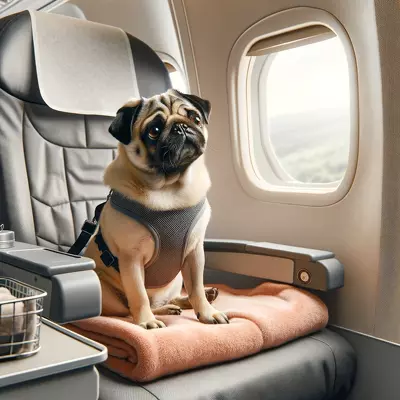The Pug Paradox: Navigating the Intriguing World of ‘Ugly-Cute’ Dogs

Some dogs capture hearts with their grace and elegance, while others—like pugs—win affection through their sheer uniqueness. From their bulging eyes to their wrinkled faces and snorting sounds, pugs are often labeled as “ugly” by those unfamiliar with their charm. But what lies beneath this unconventional appearance is a lovable, loyal, and often hilarious companion. Let’s unravel the mystery of why pugs are often called ugly—and why that label only tells part of the story.
Unpacking the “Ugly” Stereotype
The term “ugly” is deeply subjective, especially in the world of dogs. For pugs, the perception often stems from their unusual physical features: large, round eyes that seem too big for their heads, short muzzles that flatten their faces, and deep wrinkles that exaggerate their expressions. Add in their waddling gait and peculiar breathing noises, and it’s easy to see why some find their look off-putting at first glance.
However, each of these traits exists for a reason. Pugs were bred as companion dogs, and their unique structure was part of a deliberate design to enhance their role as lapdogs. Their large eyes express emotion vividly, their short noses ensure a compact build ideal for indoor life, and their wrinkles were once considered noble and even sacred in ancient Chinese culture.
A Face Full of Personality
What some call ugly, others find irresistibly charming. The pug’s facial expressions are extraordinarily human-like. Their prominent eyes can appear soulful or mischievous depending on their mood, and their furrowed brows seem to mimic concern, curiosity, or delight. Their expressions often make people laugh, which explains why pugs dominate the world of dog memes and social media posts.
Their physical quirks also contribute to their character. Their snorts, snores, and sneezes make them sound like little cartoon creatures—and in a household, these sounds become part of their charm. There’s a reason the term “so ugly it’s cute” exists, and the pug may be the ultimate embodiment of that phrase.
Health and the Brachycephalic Reality
Of course, the pug’s appearance is not without consequence. Their flat faces place them in the brachycephalic category, meaning they often have trouble breathing and regulating body temperature. This structural issue can lead to respiratory problems, especially in hot or humid environments. Some may interpret these breathing difficulties and distorted features as signs of unnatural breeding—which can contribute to the “ugly” stigma.
It’s important to recognize that while pugs are adorable in their own way, responsible breeding practices are essential for ensuring their health. Ethical breeders aim to reduce extreme features and promote better airway function. So while the look might still be quirky, the priority must always be the dog’s well-being.
Why People Love Their “Ugly” Pugs
Despite outsiders’ teasing, pug owners know the truth: these dogs have enormous hearts. Their affectionate nature, clown-like personalities, and deep loyalty make them unforgettable companions. Many people grow to love pugs because of their looks, not in spite of them. Their imperfections make them relatable and endearing—just like people.
The emotional bond pugs form with their humans runs deep. They thrive on attention and often follow their owners from room to room, seeking constant companionship. They don’t care about looking regal or intimidating. They want to be loved—and to make you laugh.
Conclusion
Pugs might not win any beauty contests by conventional standards, but their appeal lies in their authenticity. They’re not trying to impress you—they’re just being themselves. And in a world where appearance is often overvalued, that’s a lesson worth embracing. So the next time you hear someone say, “Why are pugs so ugly?” you’ll know the real answer: They’re not. They’re just a different kind of beautiful.






